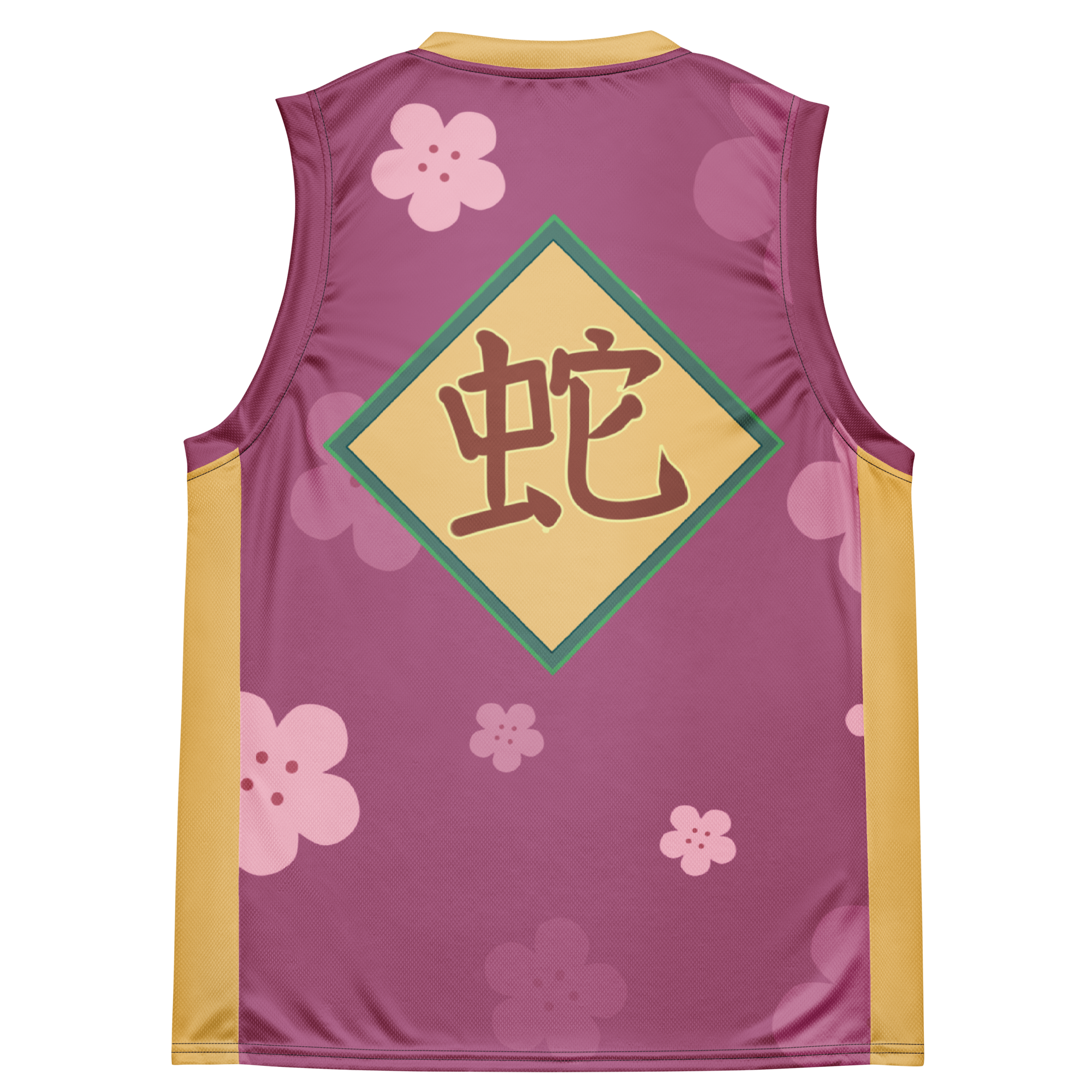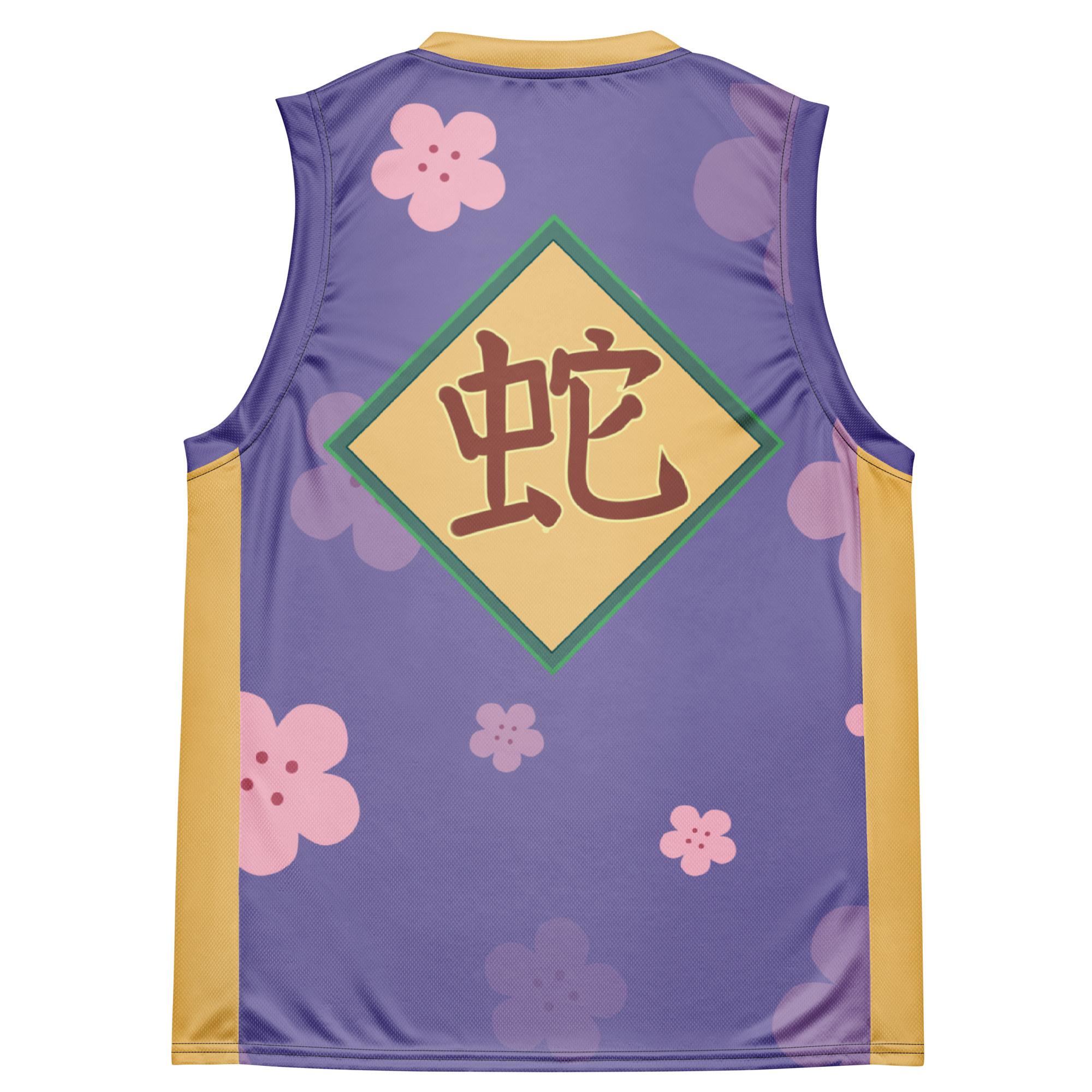6 Mouthwatering Japanese Delicacies You've Probably Never Heard Of

When you think of Japanese cuisine, your mind might immediately go to popular dishes like sushi, ramen, or tempura. Yet, Japan's food culture is so much more than these well-known staples. It’s a culinary odyssey through time, taste, and tradition.
From the coastal waters teeming with exotic seafood to mountainous landscapes offering rare and seasonal treasures, the array of unique and daring delicacies is truly awe-inspiring.
Brace yourself for an exploration into the unconventional and often surprising world of Japanese gastronomy, where each dish tells a story, each flavor evokes a memory, and every bite is a testament to the meticulous artistry and deep-rooted traditions of this fascinating cuisine.
Welcome to a journey that promises not just to tantalize your taste buds but also to connect you with the cultural heart of Japan. Ready to take the plunge? Let’s dive into the extraordinary world of Japanese delicacies.
1. Basashi (Raw Horse Meat)
Cultural Significance in Kumamoto Prefecture
Let’s kick things off with a dish that's not for the faint of heart: Basashi, or raw horse meat. This delicacy has deep roots in Kumamoto Prefecture, Japan. The origins of Basashi are as riveting as the dish itself. Legend has it that Kiyomasa Kato, the first lord of the Kumamoto domain, resorted to eating horse meat during a military campaign in Korea when his troops ran out of food. This tale has been passed down through generations, embedding Basashi deeply into local culture (Source: MAFF).
Today, Basashi is more than just a survival food; it's a symbol of resilience and culinary refinement. Known locally as "sakura niku," or cherry blossom meat, due to its pink hue, this dish represents both the hardships and the sophisticated palate of the Japanese people (Source: Texas Real Food).
Preparation and Consumption Methods
Now, how does one prepare and consume this rather unconventional sashimi? First and foremost, the preparation of Basashi is meticulous. The meat is thinly sliced, often near-frozen in the middle to prevent bacterial growth (Source: Halfway Anywhere). This practice ensures that diners can enjoy the tender texture without compromising safety.
When it comes to serving, Basashi doesn’t disappoint. It is typically accompanied by traditional condiments such as grated ginger, garlic, and Japanese horseradish (wasabi). These garnishes not only enhance the flavor but also have medicinal properties, making the dish a healthy choice as well (Source: Umami Info). Diners often dip the thin slices in sweet soy sauce, which balances out the slightly sweet flavor of the horse meat (Source: Atlas Obscura).
Why Should You Try It?
If you're still on the fence about trying Basashi, consider its health benefits. Horse meat is incredibly lean, packed with iron, and rich in vitamin B, making it one of the healthiest meat options available (Source: Jolipet). Plus, the unique experience of savoring a dish that has stood the test of time adds a layer of cultural richness to your culinary adventure.
So, if you ever find yourself in Kumamoto, don’t miss the chance to dive into a plate of Basashi. Not only will you be indulging in a flavorful treat, but you'll also be partaking in a piece of Japanese history.
2. Fugu (Pufferfish)
The Risky Delight
Fugu, also known as pufferfish, is the culinary equivalent of skydiving: thrilling, dangerous, and not for the faint of heart. This delicacy is infamous for containing tetrodotoxin, a poison that can paralyze you more effectively than your Monday morning meetings. What's worse? There’s no antidote. That's right—high stakes dining at its finest.
Meticulous Preparation
But don't start writing your will just yet. The art of preparing fugu is a meticulous and highly regulated process in Japan. Only licensed chefs are allowed to handle this fish, and they must undergo over three years of intensive training. This involves everything from skillful slicing to gutting the fish without puncturing its toxic organs Source: The Hidden Japan.
Steps in Preparing Fugu
-
Remove the skin: Start by cutting around the mouth and pulling off the skin.
-
Clean the fish: Wash off jelly-like residues using salt.
-
Remove the eyes: Yes, those need to go too.
-
Gut carefully: This is where things get dicey. Removing the liver and ovaries without bursting them is crucial.
-
Filet the fish: Cut against the bone as you would with any sashimi.
-
Boil the head: This often gets used in stews or soups Source: Kobe Jones.
Dining Experience
Despite the inherent risks, fugu is a prized delicacy in Japan. It’s typically served as sashimi, sliced paper-thin and arranged like a chrysanthemum flower. Alternatively, it can be enjoyed in hot pots, grilled, or even deep-fried Source: Web Japan. For many, the allure of fugu lies not just in its taste but in the thrill of consuming something so potentially lethal.
Why People Eat It
So why take the risk? Aside from the adrenaline rush, fugu offers a unique flavor profile that's described as delicate and slightly sweet, with a gelatinous texture. It's also believed to bring good luck—something anyone about to eat a poisonous fish could probably use Source: Web Japan.
3. Shirako (Fish Sperm)
Understanding the Texture and Flavor of This Controversial Delicacy
Shirako, or fish sperm sacs, is a delicacy that might make some people squirm before they even taste it. Often harvested from cod, anglerfish, salmon, and even pufferfish, shirako boasts a unique flavor profile that's both mild and sea-like. Imagine the freshest seafood with a creamy, velvety texture similar to runny cream cheese Source: Wa-Shoku. The slight sweetness, coupled with a hint of its oceanic roots, makes it a memorable experience for adventurous eaters Source: Serious Eats.
Texture
The texture of shirako can be described as rich and creamy, often compared to oysters or even soft tofu. When cooked, it can take on a pudding-like consistency, making it a versatile ingredient in various dishes Source: Texas Real Food.
Flavor
The flavor is subtle, with a fresh, slightly briny taste that doesn’t overpower the palate. Fans of this delicacy often describe it as having a distinctive umami taste, which adds to its appeal Source: Taste Winchester History.
Seasonal Availability and Popular Dishes Featuring Shirako
Shirako is a seasonal treat, primarily available during the winter months from December to February. This is when male cod are naturally producing milt, ensuring the highest quality and freshest supply at fish markets across Japan Source: Texas Real Food.
Popular Dishes
Shirako can be enjoyed in various culinary forms:
-
Sashimi: Served raw with a citrusy ponzu sauce, grated daikon, and spring onions, offering a direct taste of its creamy texture.
-
Nabe (Hot Pot): Gently simmered with vegetables and tofu in a savory broth, often flavored with soy sauce and ponzu for added depth Source: Texas Real Food.
-
Tempura: Deep-fried in a light batter, providing a crisp exterior that contrasts beautifully with the creamy inside Source: The Kitchn.
-
Chawanmushi: Incorporated into a steamed egg custard, enhancing the dish with its rich texture Source: Zojirushi Blog.
For those brave enough to try, shirako offers a truly unique culinary experience that’s deeply rooted in Japanese tradition. So, next time you find yourself in Japan during winter, why not give it a shot? You might just discover your new favorite delicacy.
4. Hoya (Sea Pineapple)
An Unusual Appearance and Strong Flavor
Let's dive into one of Japan's most unusual and polarizing delicacies—Hoya, also known as Sea Pineapple. If you've ever wondered what a fruit from a hallucinatory eco-system might look like, wonder no more. The sea pineapple looks eerily similar to its namesake fruit but with a twist that only the ocean could conjure. Its exterior is covered in bumps and grooves, resembling a spiky alien artifact. Inside, the flesh is an eye-catching orange or red, depending on the variety.
The taste? Well, let's just say it's not for the faint-hearted. Described as a mix of iodine, rubber dipped in ammonia, and a refreshing ocean sweetness, Hoya is an acquired taste favored by connoisseurs. The flavor has been attributed to an unsaturated alcohol called cynthiaol, which is present in minute quantities (Source: Reddit).
Nutritional Benefits
Despite its challenging flavor profile, Hoya boasts impressive nutritional credentials. Packed with minerals such as phosphorus, iron, and potassium, it also contains vitamins E and B12, making it a nutritious addition to your diet (Source: Umai Aomori). Additionally, it contains taurine, which is essential for cardiovascular health, and plasmalogen, known for its brain-boosting properties (Source: Euro Greens).
Culinary Uses
So, how do you eat this bizarre sea creature? In Japan, Hoya is most commonly enjoyed raw as sashimi. To prepare it, the tough outer shell is removed, and the inner flesh is sliced and served with vinegared soy sauce. However, that's not the only way to enjoy it. Here are some popular methods:
-
Grilled: Grilling brings out a smoky flavor that complements its natural umami.
-
Steamed: Steaming Hoya softens its texture and mellows its strong taste.
-
Dried: Often used as a snack or added to soups for an extra burst of flavor.
-
Marinated: Marinating in vinegar or soy sauce helps to balance its intense flavors.
Hoya is also a common ingredient in Korean cuisine, where it is often eaten raw with gochujang (vinegared chili paste) or pickled to add flavor to kimchi (Source: Wikipedia).
Seasonal Availability
Primarily harvested in the Northeast and Hokkaido regions of Japan, the best time to enjoy fresh Hoya is from late spring to early summer. There's a local saying that "Hoya fattens along with cucumber," indicating that it reaches peak flavor when cucumbers are in season (Source: Umai Aomori).
Whether you find it intriguing or intimidating, Hoya is a testament to the adventurous spirit of Japanese cuisine. It's a dish that challenges your palate while offering a multitude of health benefits. So next time you're in Japan, why not take a culinary leap and give it a try?
5. Funazushi (Fermented Sushi)
Tracing Back to the Origins of Sushi
Ever wondered what sushi tasted like before it became the fancy rolls we know today? Enter Funazushi, the OG of sushi, hailing from Shiga Prefecture. This fermented delight is not just a dish; it's a time capsule that takes us back centuries. Unlike its modern counterparts, Funazushi doesn’t rely on fresh fish but instead uses freshwater carp, specifically the nigorobuna from Lake Biwa. The process of preserving fish through fermentation dates back to ancient China and Southeast Asia, arriving in Japan around the 8th century Source: Eat Japan.
How Funazushi is Made
Making Funazushi is an art form that requires patience, precision, and a whole lot of salt. Here’s a quick rundown:
-
First, the internal organs of the crucian carp are removed.
-
The fish is then salted and left to cure for a couple of years under heavy stones.
-
After curing, the fish is washed, dried, and packed in cooked rice for another year of fermentation.
This labor-intensive process results in a dish with a pungent aroma and a taste often compared to strong cheese Source: Atlas Obscura.
Why It's a Rare Find Outside of Shiga Prefecture
So, why isn't Funazushi gracing sushi menus worldwide? For starters, the nigorobuna carp used in this dish is becoming increasingly rare due to changes in Lake Biwa's habitat Source: Tokyo Foundation. Moreover, the lengthy fermentation process is not something you can easily replicate in a bustling city restaurant. Only a handful of families in Shiga continue this tradition, some for over 18 generations Source: Fermentation Association.
Cultural Significance and Modern-Day Appreciation
Funazushi isn’t just food; it’s a cultural artifact. Historically, it was a staple for rice farmers and even considered a luxury item among samurai and aristocrats. Today, it’s enjoying a bit of a renaissance as chefs explore aged and fermented flavors. Restaurants like Kitashina in Takashima continue to serve this delicacy, offering a unique window into Japan's culinary past Source: BBC. If you ever find yourself in Shiga, don’t miss the chance to try Funazushi. It might just change the way you look at sushi forever.
6. Umeboshi (Pickled Sour Plums)
Welcome to the tangy, salty world of Umeboshi! These pickled plums are a culinary staple in Japan and have been enjoyed for centuries—not just for their unique flavor but also for their numerous health benefits.
Health Benefits of Umeboshi
Umeboshi is often hailed as a superfood, and for good reason. Packed with polyphenols, these sour delights can help reduce the risk of diabetes, lower blood pressure, prevent the hardening of arteries, and even boost calcium absorption (Source: JST News).
-
Digestive Aid: Umeboshi helps stimulate gastric juices, aiding digestion and nutrient absorption (Source: Wikipedia).
-
Anti-inflammatory: The polyphenols in Umeboshi have anti-inflammatory properties that can benefit overall health.
-
Immune Booster: Rich in vitamins A, C, B1, B2, E, and K, as well as minerals like iron, copper, and zinc, Umeboshi can give your immune system a significant boost (Source: Nakata Foods).
-
Hangover Cure: Citric acid in Umeboshi aids liver function, making it a popular hangover remedy in Japan (Source: Yahoo Style).
Culinary Versatility of Umeboshi
Umeboshi is not just a health booster; it's a flavor powerhouse that can enhance a wide range of dishes. Its salty, acidic, and fruity punch can enliven everything from noodles to salad dressings (Source: America's Test Kitchen).
Popular Ways to Enjoy Umeboshi
-
Onigiri: Umeboshi is often used as a filling for Japanese rice balls, providing a savory and tangy flavor that complements the blandness of white rice.
-
Bento Boxes: Known as "hinomaru bento," a single umeboshi placed on top of white steamed rice resembles the Japanese flag and acts as a natural preservative (Source: Gurunavi).
-
Ochazuke: This traditional dish consists of steamed white rice partially steeped in green tea or dashi broth, with umeboshi adding a delightful tartness.
-
Tempura: Coat umeboshi in tempura batter and deep-fry for a crispy, tangy treat.
-
Dressings and Marinades: Use umeboshi paste in vinaigrettes or marinades to add a unique depth of flavor.
-
Umeboshi Mayo: Mix umeboshi plums with mayonnaise for a tangy condiment perfect for sushi or grilled meats.
With its myriad health benefits and versatile culinary applications, Umeboshi is truly a gem in Japanese cuisine. Whether you're adding it to a simple bowl of rice or using it as a key ingredient in a complex dish, Umeboshi brings a burst of flavor and a host of health benefits to your table.
Conclusion
Japan's culinary landscape is a treasure trove of unique and daring delicacies, each offering a fascinating blend of flavors, textures, and cultural significance. From the potentially lethal yet prized Fugu, to the creamy and subtly umami Shirako, and the polarizing yet nutrient-rich Hoya, adventurous eaters have much to explore.
Traditional treasures like Funazushi provide a historical journey into the roots of sushi, while the tangy Umeboshi showcases the power of pickling in creating health-boosting superfoods.
Each dish not only offers a distinct sensory experience but also an invitation to delve into Japan's rich culinary heritage, marked by meticulous preparation techniques and deep-rooted traditions.
So, the next time you find yourself in Japan, take the plunge into this diverse food culture—you may just discover a new favorite that both surprises your palate and connects you with centuries of gastronomic history.


































Leave a comment